 Saar Offensive |
 Table of Contents |
 Luxembourg |
 Saar Offensive |
 Table of Contents |
 Luxembourg |
On December 26 the division moved north from Metz to relieve the Tenth Armored Division in a defensive position north of Mersch, Luxembourg. The battalion began its march just after noon, past Thionville to Luxembourg City and Mersch, thence northeast to Medernach and into positions around Ermsdorf. Its mission was direct support of the 50th Armored Infantry and its defensive line some 5000 yards to the north, on the south side of the Sauer River; that river marked the left flank of Rundstedt's drive. Several observation posts were established on the high ground south of the river, but poor visibility hampered operations, and firing during the battalion's stay at Ermsdorf was comparatively light. Enemy activity was light too, but very harassing; several hours after Ermsdorf was reached at 1950 the 26th, counter-battery fire fell in the area and continued all night; the same fare was the menu for the two remaining nights; and on the final night, December 28, a German Messerschmitt dropped a bomb in the town which just narrowly missed the building housing battalion headquarters. The battalion had its first taste of snow at Ermsdorf too; Luxembourg was white and frozen when the batteries rolled into their positions.
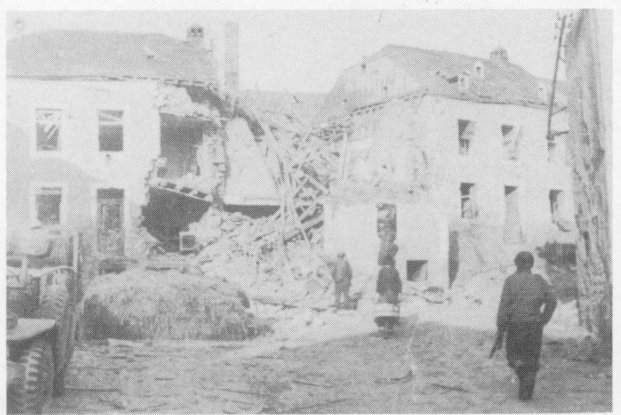
On December 29 the Fifth Infantry Division relieved the Sixth Armored in the Mersch area. Bastogne was calling! Initially the division was to move west to the Arlon-Neufchateau area southwest of Bastogne to assemble. The 212th left Ermsdorf at noon, traveling southwest to Mersch and Arlon, and then northwest to Mellier where billets were occupied for the night. The next night, December 30, movement was begun just after dark northeast to Assenois, a town about two miles south of Bastogne; this was the battalion's initial position in the battle around the beleaguered city. The mission of the division was to relieve the Fourth Armored Division northeast of Bastogne, and attack north and east in the direction of St. Vith, vital communications center in the heart of the German bulge.
Combat Command B was scheduled to attack the morning of December 31, but difficulty moving up from the Neufchateau assembly area caused a delay until January 1. The roads, already covered with light snow, became slick sheets of ice as more snow fell the night of December 30 and the bitter cold froze it as it hit the ground; vehicles skidded everywhere. Snow continued to fall most of the day December 31 too, and New Year's Eve, and by morning January 1 Belgium's white blanket was heavy.
But the attack was launched despite snow and cold. It went well too, and by 1400 the battalion had to displace; its new positions were about half a mile northeast of Bastogne, just east of Luzery. After the displacement the tempo of firing was quickened considerably as the attacking forces neared the day's objectives, Arloncourt, Oubourcy, and Michamps. The towns were taken by 1600, but almost immediately the Germans counter-attacked with a large force of infantry and tanks, supported by heavy artillery. The battalion stopped the advancing Germans by pouring 500 rounds at them in twenty minutes, but Wall's forces had to withdraw to the woods southwest of Oubourcy; nearly all of the day's gains had been lost.
Early the next morning the Germans counter-attacked again from the northeast with tanks and infantry. The attack was repulsed with heavy artillery assistance from the battalion, but the Germans too blocked every attempt to advance that Combat Command B made the rest of the day. They threw wave after wave of infantry into the battle, strengthened with scattered tanks and supported by the largest concentration of artillery the Sixth had yet encountered. The battalion fired over 3,000 rounds against these forces and in support of its own infantry throughout the day as it tried again to reach Oubourcy and Michamps; but by nightfall the line was exactly where it stood at the beginning of the day's action.
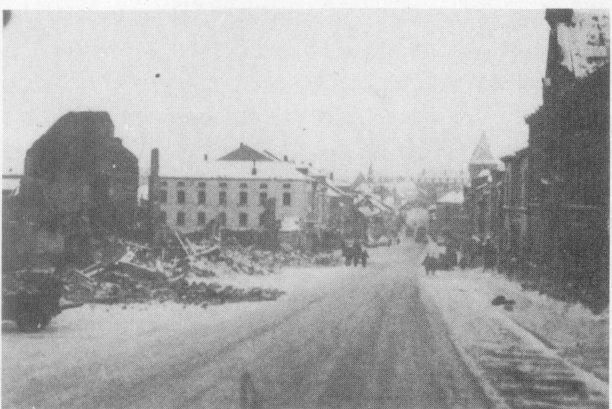
It was very apparent now that the Germans were determined to stop any attack in this area. When the Fourth Armored had broken into Bastogne from the south to assist the encircled 101st Airborne and had advanced east of the city to where the Sixth relieved it on January 1, the penetration was into the flank of Rundstedt's salient, and his main forces were naturally still at the head of the drive farther west; but by now the American Bastogne salient loomed as the principal threat to the whole German operation, and all available troops were rushed not only to contain it but to liquidate it if possible. According to intelligence reports, at its peak the German build-up against the Sixth totaled six complete divisions. But while the Sixth could make no gains, neither was its salient liquidated and in due time the six German divisions were cut to shreds. It must be said also, however, that the division's losses were the heaviest it experienced. On each of the first two days of the battle, a member of the battalion was killed: January 1, Sgt. Edward W. McAlpine of Battery A was hit by a mortar shell while on a forward observer mission; and on January 2 the bat- talion's only officer death occured when Lt. Albert M. Jagger was killed by enemy artillery while he was advancing on a tank with the supported infantry. On January 2 also Tec. 4 John C. Grady and Pfc. Troy L. Bennett, both of Headquarters Battery, were injured in a peep accident while they were on a radio repair mission.
January 3 the combat command did not attempt any further attack, but contented itself with holding its line in the woods between Otibourcy and Bizory. The Germans continued their counter-attacking, but all were beaten off. Heavy firing was again the battalion's order of the day, despite more snow and resultant bad visibility; 2200 rounds were expended. Around noon counter-battery fire fell in the Luzery area, and two enlisted men were wounded: Pvt. Melvin L. Buingardner, Headquarters Battery, and Pfc. Allen S. Middleton, B Battery.
January 4 was a dark day for the Sixth Armored Division. Beginning early in the morning, the Germans hurled everything they could muster at the division's positions in all, seventeen separate counter-attacks were launched, complete with infantry, tanks, and artillery. Finally by nightfall the division was forced to withdraw some several thousand yards to shorten its lines in an effort to compensate for its terrific losses in men and materiel, but each German blow had been successfully beaten off-and largely by the sheer weight of massed artillery that cut each German force to pieces as it assembled. The battalion fired 3,222 rounds during the day; Service Battery's trucks were hauling ammunition day and night over icy Belgian roads to feed the guns.
The next day the battalion withdrew back through Bastogne to positions about a mile southwest of the city, around Isle-le-Pre. Luzery was deemed too precarious for artillery, after the division's withdrawal of the previous day had brought the line back to Bizory, only 2,000 yards east of Bastogne and Luzery. The change of position altered the battalion's activities little, however. The Germans continued to be active all along the division front, though never again to the extent they were on January 4, and fires were delivered day and night in support of Wall's defensive positions, and later in support of elements of the 320th Infantry Regiment of the 35th Division, which was brought in to reinforce the division and begin limited attacks on January 10.
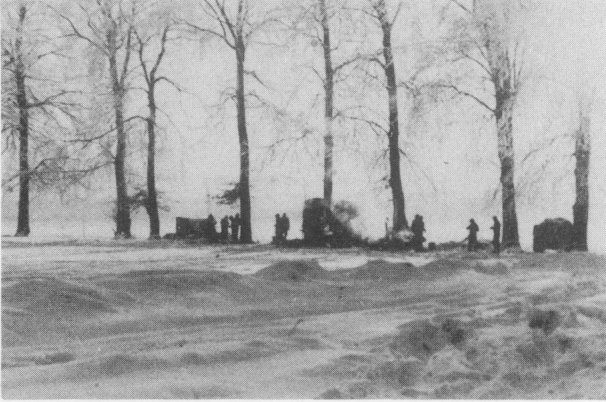
During this period, and in fact through all of the Bastogne campaign, whenever snow and poor visibility did not ground them, the battalion liaison pilots and air observers had a field day adjusting fire on the continuous flow of Germans into the battle. What the battalion wiremen did could hardly be called a field day, but maintaining two trunk lines through the center of Bastogne was in itself a full time job; the Ger- mans kept pounding the city day and night with their heaviest artillery, and every concentration cut lines. One of the concentrations landed as the battalion was pass- ing through on January 5, and Sgt. Manuel Silva of Battery C was wounded. Some of the fire overshot its mark, and landed in the battalion's isle-le-Pre positions. An A Battery man, Pfc. Grady E. Wilson, was wounded by this fire on January 12; the next day Sgt. William C. Caffelle was wounded by a round that landed in his B Battery.
The daily attacks finally took Oubourcy, and on January 15 the battalion was able to displace to positions a mile east of Bastogne, between Mont and Neff. Little firing was done from this area, because more heavy snow and almost zero visibility made observation impossible most of the time. Michamps was taken, however, and on January 20 the battalion moved to occupy positions between Bizory and Oubourcy.
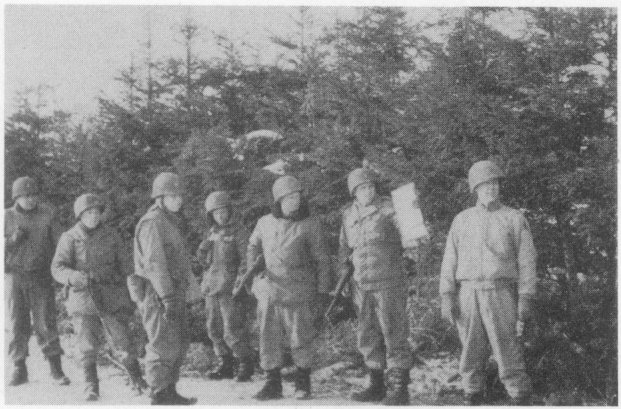
By this time German might in the bulge was only history; they were retreating all along the line, and the remaining days of the Ardennes campaign was pursuit. The 212th was placed in Combat Command A for the race, in direct support of Task Force Britton, the 9th Infantry Battalion. Very little support was necessary, however, until the Clervaux River and Troisverges as reached late January 22. The battalion spent most of its time on the road making long displacements, on January 21 to Moinet, and the next day across the Belgium-Luxembourg border to Weiler. From the vicin- ity of Weiler, the combat command's advance into Troisverges was supported on Jan- uary 23; and on the next two days the battalion delivered fire in support of attacks on Weiswampach, Breidfeld, and the high ridge overlooking the boundary between Luxembourg and Germany. Displacement across the river was not permitted, because the division was scheduled to stop once the high ground was taken. January 26 saw practically no activity at all, and the next day the division was relieved and given a defensive zone to the south around Clervaux. A month of holding and "active defense" was beginning.
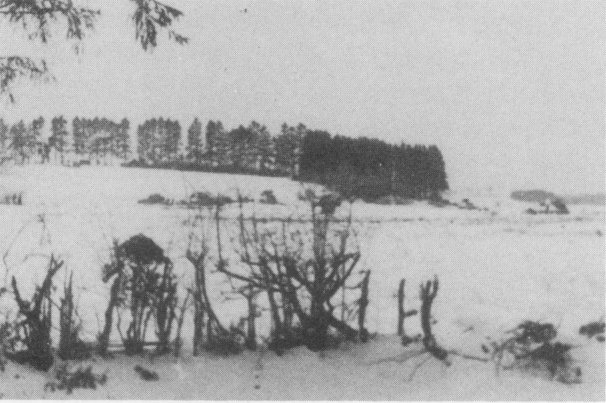
 PREVIOUS SECTION: The Saar River Campaign
PREVIOUS SECTION: The Saar River Campaign
 Go to the 6th Armored Division Assoc. Home Page.
Go to the 6th Armored Division Assoc. Home Page.
 Information about the 212th FA and 6th Armored Division veterans' associations.
Information about the 212th FA and 6th Armored Division veterans' associations.
NOTE: Remove question mark from address below when sending email
This page is maintained by Bruce Frederick, EMAIL .
Last updated: August 9, 1997.
